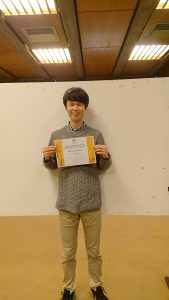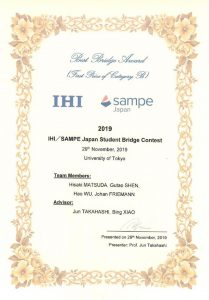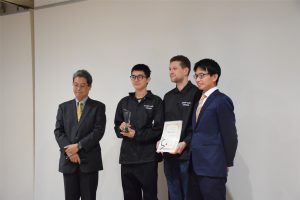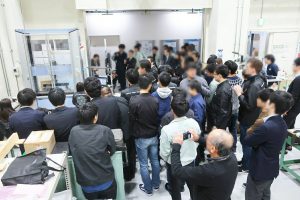5.Your impression & future plan I am honored to win such a wonderful award. I will make an effort to improve this research to apply the proposed method to real-world datasets.

5.Your impression & future plan I am honored to win such a wonderful award. I will make an effort to improve this research to apply the proposed method to real-world datasets.

【Press Releases】Visualisation method for the broad distribution of seafloor ferromanganese deposits: Lecturer Kazutaka Yasukawa, Professor Yasuhiro Kato, Frontier Research Center for Energy and Resources, and other researchers
http://www.t.u-tokyo.ac.jp/soee/press/setnws_201912112002546089424844.html
The increasing global demand for industrially critical metals has driven the development of deep-sea mineral resources. In the past, acoustic exploration has been utilised as an efficient technique for investigating deep-sea mineral resources. However, a practical method applicable to a wide distribution of resources has not yet been established. We show that the acoustic backscatter intensity of the seafloor determined using a vessel-equipped multi-narrow beam echo sounder provides an inherent threshold that bounds different types of geology, e.g. barren pelagic sediment and dense ferromanganese nodules. We found that multiple datasets from different sounders and/or the observation periods could be integrated on the basis of the thresholds that indicate the same geological boundaries. Furthermore, the integrated data and threshold provided visualisation and quantitative estimations regarding the distribution of ferromanganese deposits covering thousands of square kilometres. Our method is applicable after minimal data processing and ground-truth observations, and provides expeditious and exhaustive reconnaissance exploration.
Marine Georesources & Geotechnology:
https://www.tandfonline.com/doi/full/10.1080/1064119X.2019.1696432



Meteorite impacts have caused catastrophic perturbations to the global environment and mass extinctions throughout the Earth’s history. Here, we present petrographic and geochemical evidence of a possible impact ejecta layer, dating from about 11 Ma, in deep-sea clayey sediment in the Northwest Pacific. This clay layer has high platinum group element (PGE) concentrations and features a conspicuous negative Os isotope anomaly (187Os/188Os as low as ~0.2), indicating an influx of extraterrestrial material. It also contains abundant spherules that include pseudomorphs suggestive of porphyritic olivine as well as spinel grains with euhedral, dendritic and spherical forms and NiO contents as great as 23.3 wt%, consistent with impact ejecta. Osmium isotope stratigraphy suggests a most plausible depositional age of ~11 Ma (Miocene) for this layer, as determined by fitting with the seawater evolution curve. No large impact crater of this age is known on land, even within the relatively large uncertainty range of the relative Os age. Thus, we suggest that an unrecognised impact event in the middle or late Miocene produced the impact ejecta layer of the Northwest Pacific.
Scientific Reports:
https://www.nature.com/articles/s41598-019-52709-1
References
Press Releases:
https://www.t.u-tokyo.ac.jp/…/setnws_2019112111235657315787…
JAMSTEC:
http://www.jamstec.go.jp/j/about/press_release/20191120/
Tokyo Institute of Technology :
https://www.titech.ac.jp/news/2019/045695.html
KYUSHU UNIVERSITY :
https://www.kyushu-u.ac.jp/ja/researches/view/397
NIKKEI, Inc:
https://www.nikkei.com/article/DGXLRSP523673_Z11C19A1000000/